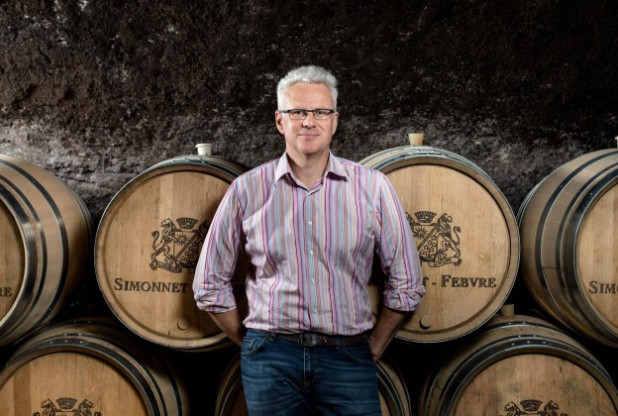
Chablis faces tough harvest but targets UK growth
The 2024 vintage in Chablis has emerged from one of the most challenging seasons in recent memory, with severe frost, hailstorms and heavy rains collectively slashing yields by an estimated 60%. Despite these setbacks, the region’s winemakers remain optimistic, citing the vintage’s distinctive quality, marked by vibrant lemon and grapefruit notes and characteristic minerality.
“The 2024 vintage was quite a complicated one for us,” Paul Espitalié, president of the Chablis Commission, told Harpers. “We had quite a lot of problems with the weather, mainly starting with a severe frost in April, which is common in the season, but this was unusually cold, so we lost a bit of crop.” The frost was soon followed by a devastating hailstorm on 1 May, impacting nearly 1,000 hectares. “It was a very important storm with very bad hail, which destroyed a significant part of the crop,” Espitalié (pictured) said.
The damage, compounded by double the usual rainfall through spring and summer, posed formidable challenges to vine health and disease management.
Organic vineyards were hit particularly hard. “It was a big challenge for all the vines that we are growing with organic production,” said Espitalié. He explained that organic treatments are more susceptible to being washed away by heavy rains, requiring repeated applications. This meant an intensified workload as growers worked to contain mildew outbreaks that persisted throughout the season.
- Read more: Friday read – Embracing Costières de Nîmes
In response, winemakers were forced to push the harvest later than usual, finally beginning in late September and concluding around 8 October – a throwback to the timelines of two or three decades ago. The result, however, has been wines with a lower alcohol content and pronounced acidity, which many believe will appeal to the current market preference for fresher profiles.
“We have a style of Chablis that is very fresh, with a lot of lemon and grapefruit flavours, minerality and a nice acidity,” said Espitalié. “It’s a style we quite like, but of course, volumes are limited.”
This lower yield comes at a time when Chablis is actively adapting to climate change, with younger winemakers in particular taking up sustainable and innovative viticulture practices. Espitalié observed that this new generation brings “new winemaking techniques and ideas”, after experiences in other vineyards, and that their commitment to quality and sustainability signals a shift in the region’s priorities. Techniques like using local yeasts and reducing sulfites are becoming increasingly common, as is experimenting with resistant grape varieties to manage disease pressure in a more sustainable way.
Meanwhile, Chablis remains highly regarded in the UK market, which is now the region’s second-largest export destination by volume and value, despite a 4.7% dip in shipments for the first seven months of 2024. Even as inflation impacts consumer spending, Chablis’ appeal as a refined, dry white wine has resonated particularly well with older demographics, though winemakers are increasingly keen to capture younger drinkers too.
To support this, the Bourgogne Wine Board (BIVB) has ramped up its marketing in the UK. Traditionally focused on sommeliers and on-trade influencers, BIVB plans to broaden its strategy in 2025, directly engaging consumers with a focus on positioning Chablis as a versatile option that can feature in casual settings as well as formal dining. As Espitalié pointed out: “The English market is a kind of market where people are keen on this type of easy-drinking, dry white wine, and Chablis is the perfect example.”
The campaign will also seek to revitalise Chablis’s presence beyond supermarkets and onto wine lists in pubs and restaurants. “It could be interesting for us to try to sell to consumers in different ways, maybe in bars and pubs, to put Chablis back in the pubs would be a good idea,” said Espitalié, indicating a shift towards making Chablis more accessible across varied drinking occasions.
While this year’s vintage is notably small, Chablis’s focus on quality, innovation, and sustainable practices reflects a determined response to both environmental and market challenges. By adapting its approach, Chablis is well-positioned to strengthen its standing in the UK market, ensuring that its unique terroir continues to captivate a growing audience of both new and seasoned wine drinkers.
Keywords:
- UK market
- Chablis
- frost
- younger consumers
- Sustainability
- terroir
- wine marketing
- Paul Espitalié
- organic viticulture
- Bourgogne Wine Board
- quality wines
- 2024 harvest
- hailstorms
- yield reduction
- climate adaptation




